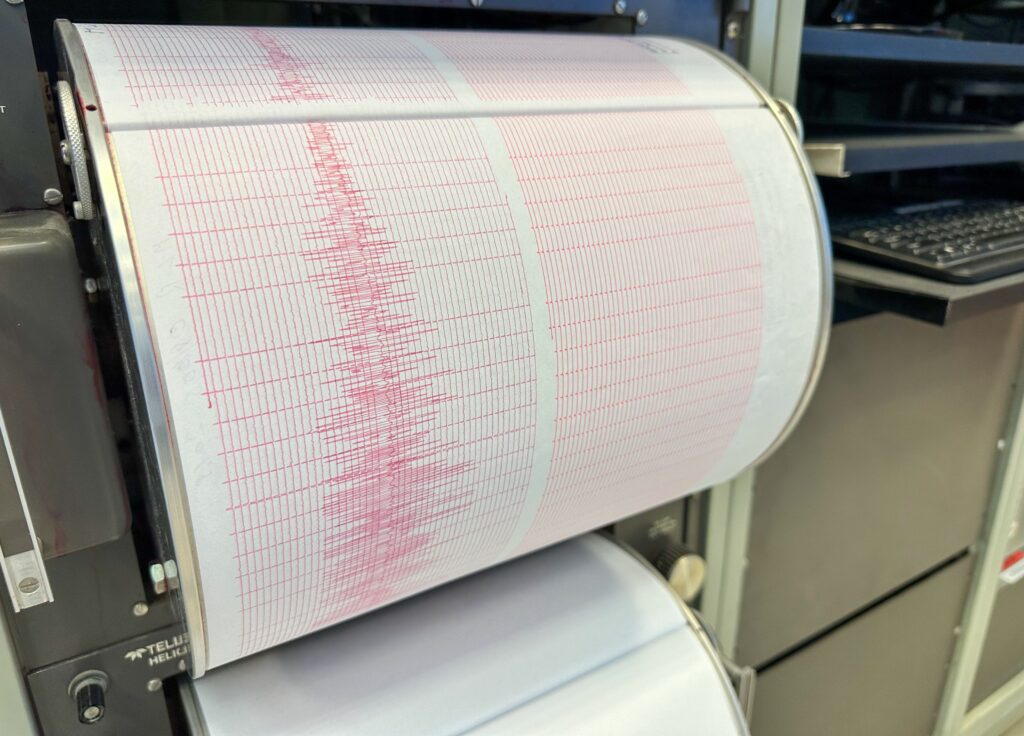A strong earthquake of 7.7 magnitude hit central Myanmar on Friday afternoon at around 12:50 p.m. local time. The tremor caused buildings to collapse, cracked roads, and killed at least 20 people in Myanmar. The earthquake also sent shockwaves across the border into Thailand, where the collapse of a high-rise in Bangkok killed at least three people.
USGS Confirms Epicenter Near Mandalay
The US Geological Survey (USGS) confirmed that the epicenter of the earthquake was near Mandalay, Myanmar’s second-largest city. The quake occurred at a depth of 9.97 kilometers, about 16 kilometers from Mandalay, which has a population of 1.2 million people. Twelve minutes after the main earthquake, a 6.4 aftershock struck 18 kilometers south of Sagaing, causing more damage.
Buildings Collapse in Myanmar and Thailand
The earthquake caused massive damage across central Myanmar. Buildings collapsed in several cities, including Mandalay, where parts of the royal palace and other historic buildings were damaged. A bridge connecting Ava and Sagaing fell into the Irrawaddy River. Videos on social media showed parts of the bridge crashing into the water below.
In Thailand, the impact was also severe. A high-rise building in Bangkok collapsed, killing at least three people. Rescue teams rushed to the scene, and emergency workers searched through the rubble for survivors. People on the streets were left in shock as the tremors continued.
Hospitals Strained in Naypyidaw
The earthquake also affected hospitals in Myanmar. In Naypyidaw, the main hospital’s emergency entrance collapsed onto a car parked outside. The building was damaged, and medical staff had to treat patients outdoors. Injured people lay on gurneys, and IV drips were hung from improvised stands. The staff worked tirelessly to help the injured, but the situation was overwhelming.
Sagaing Fault Behind the Earthquake
Experts say the earthquake was caused by activity along the Sagaing Fault. The fault runs for about 1,200 kilometers through Myanmar and is known for causing powerful earthquakes. According to Shengji Wei from the Earth Observatory of Singapore, earthquakes along this fault are not unusual. The fault stores a large amount of energy, which is released in sudden bursts, causing strong tremors.
The Sagaing Fault has a high slip rate, meaning it often builds up energy that can cause massive earthquakes. The quake that struck Myanmar on Friday was one of these sudden releases. It caused widespread destruction and sent shockwaves across the region.
Thailand Feels the Impact of Myanmar’s Earthquakes
Although Thailand does not sit on the Sagaing Fault, the country still feels the effects of earthquakes from Myanmar. Most of the tremors that reach Thailand come from powerful quakes in Myanmar. The 7.7 magnitude earthquake on Friday was no exception. The tremors traveled across the border, causing damage in cities like Bangkok.
While Thailand is not usually at high risk for earthquakes, it is still vulnerable to the seismic activity from neighboring Myanmar. The 7.7 magnitude quake demonstrated how the effects of Myanmar’s earthquakes can be felt far beyond its borders.
The Aftermath: A Call for Improved Earthquake Preparedness
The earthquake has left both Myanmar and Thailand facing significant challenges. In Myanmar, the damage is widespread, and many people are in urgent need of medical help. Emergency teams are working hard to provide aid, but the situation remains difficult. In Thailand, the collapse of the high-rise building in Bangkok is a reminder of the dangers posed by large earthquakes in the region.
Both countries must improve their earthquake preparedness in the future. This includes strengthening infrastructure, improving early warning systems, and training emergency responders. The destruction caused by the 7.7 magnitude earthquake shows the importance of being ready for future seismic events.
Efforts to Rebuild and Support Victims
As both Myanmar and Thailand begin to assess the damage, efforts to rebuild and support the victims of the earthquake are already underway. Governments, emergency services, and humanitarian organizations are working together to help those who have been affected. Many people are left homeless, and families are grieving the loss of loved ones.
Reconstruction will take time, but the focus is on providing immediate relief to those in need. Hospitals are treating the injured, while rescue teams continue to search for survivors in the rubble. Efforts are also being made to restore vital infrastructure, including roads, bridges, and power supplies.
A Region at Risk: The Need for Regional Cooperation
This earthquake highlights the importance of regional cooperation in disaster preparedness. As seismic activity continues along the Sagaing Fault, both Myanmar and Thailand must work together to ensure they are ready for future earthquakes. Better planning, better building standards, and a stronger focus on disaster resilience will help protect people from the devastating effects of such natural disasters.
